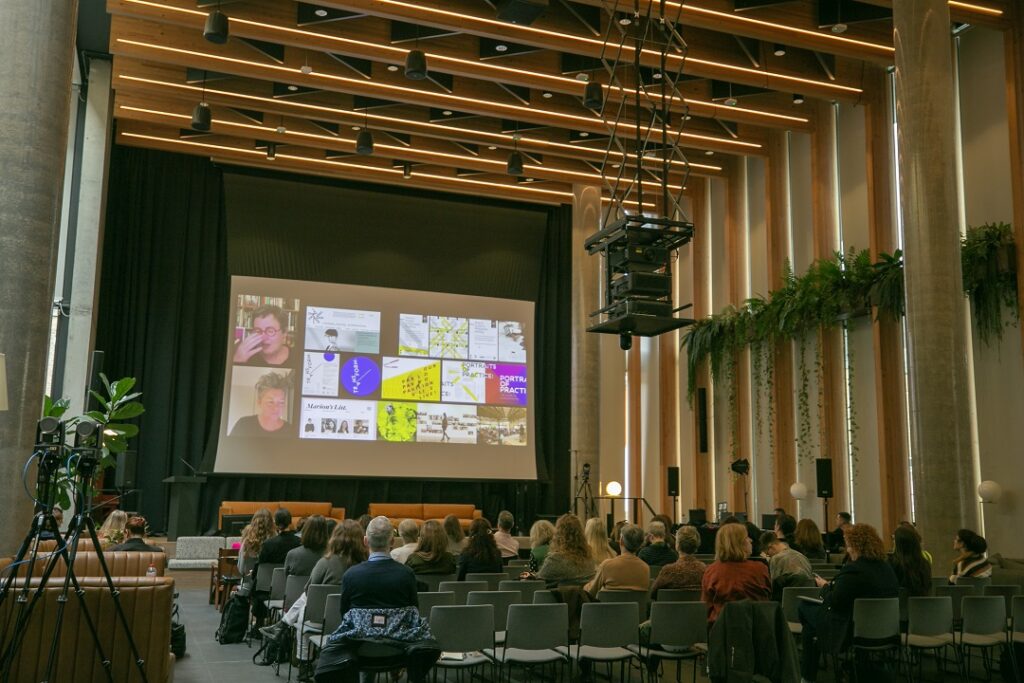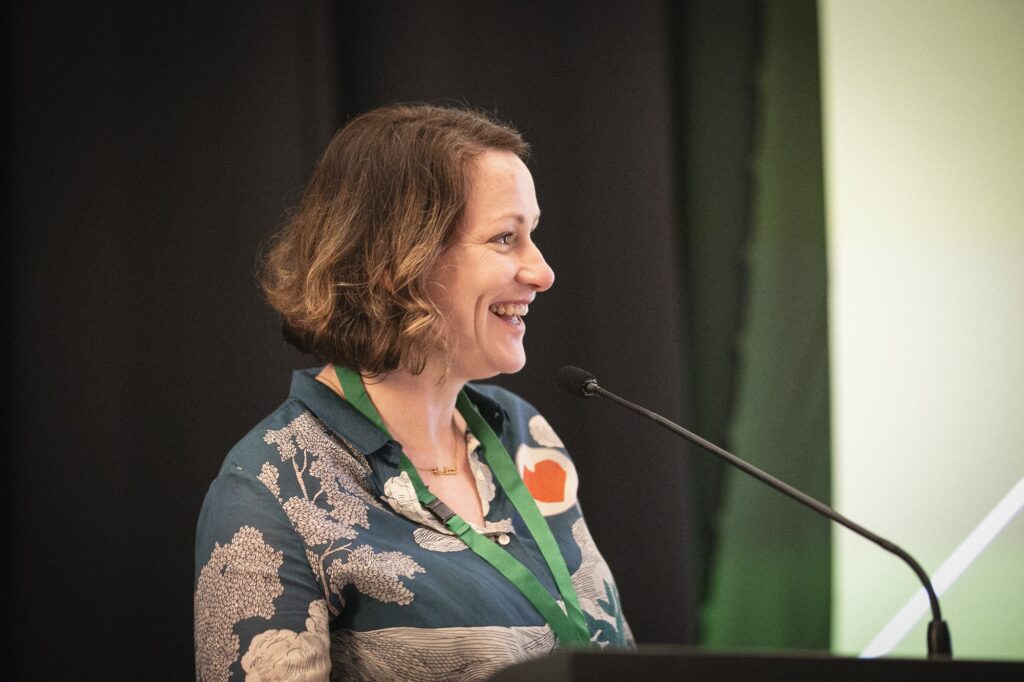Gender Equity in Built Environment Professions │16 February 2024│Dublin
The conference was a great success with interesting, challenging and enthusiastic speakers. Over the course of the day we heard from thirteen speakers on eleven presentations. In total, over 170 audience members joined us between online and in-person attendance.
As I said on the day, I hope this conference will mark the start of positive change for all in the built environment professions.
The event was recorded and as these recordings become available they will be posted here under ‘Talks’.
Photos by Rachel Loughrey

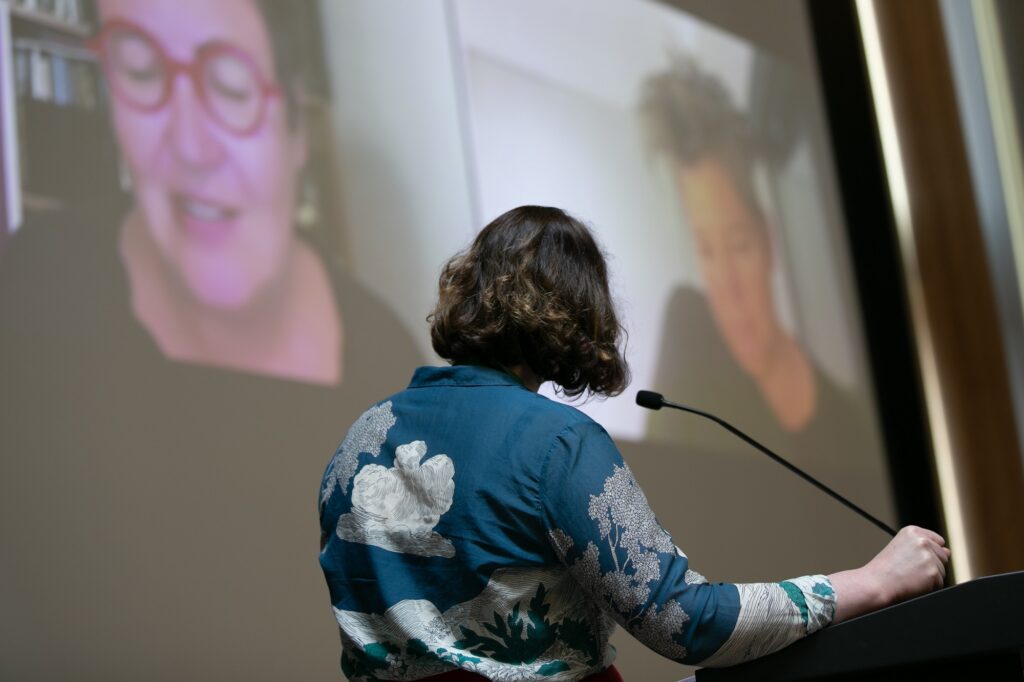
Our first keynote of the day was by the brillian Justine Clark and Naomi Stead of Parlour. I strongly believe in architects and their potential to do good in the world. I also believe that researchers have a duty to make their research visible to the public and the wider world. This is why the work that Parlour does is so inspirational to me – not only do they do important research they also ensure that that research is visible and they pay attention to those who might feel invisble. This is why I asked Naomi and Justice to be keynote speakers at our conference

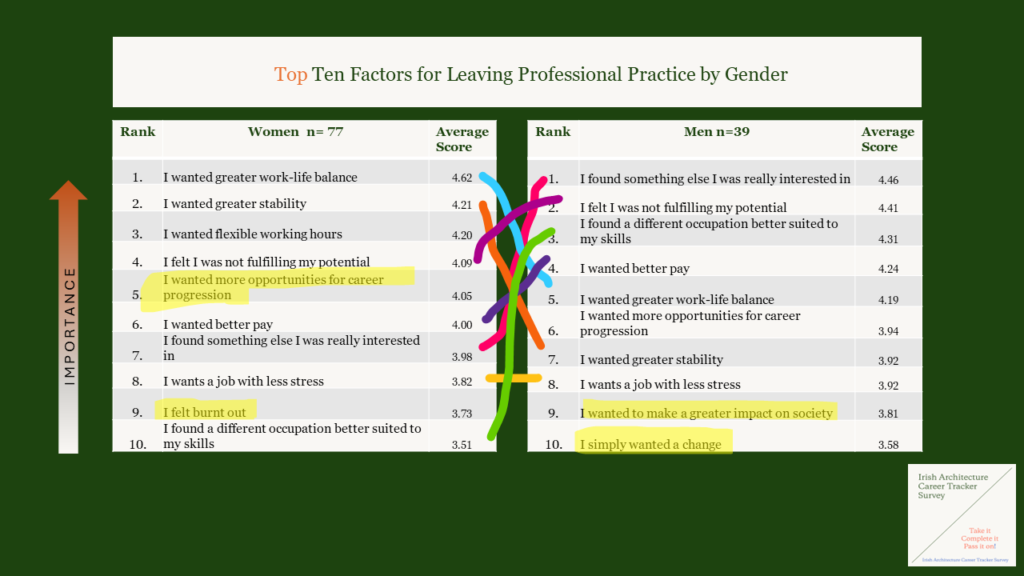
Our first panel session was ‘Setting the Context: Women in Built Professions in Ireland and Europe’ brilliantly chaired by Dr Miriam Fitzpatrick, UCD School of APEP.
Dr Carole Pollard FRIAI kicked us off with an overview of ‘How We Got Here’, outlining the context from which Irish women architects emerged and the work these pioneering women produced.
Dr Paula Russell, UCD, gave us insights in to the research that she and Dr Sara Honarmand Ebrahimi have done on women in architecture and planning in Ireland. Paula noted a trope of women’s lack of confidence being blamed – a personalisation of what is really a structural issue and reminded us of our current need for the feminist slogan of the 70s – THE PERSONAL IS POLITICAL!
Dr Selma Harrington presented the work that the Architect’s Council of Europe (ACE) have been doing in this area and the publication of their handbook ABC:GENDER BALANCE, DIVERSITY AND INCLUSION IN ARCHITECTURE. You’ll find it on the ACE website: www.ace-cae.eu
I showed some new preliminary findings from the Irish Architecture Career Tracker Survey from last spring – the top ten most important factors leaving the professional practice of architecture. For women respondents the top three are 1) I wanted greater work-life balance 2) I wanted greater stability 3) I wanted flexible working hours. For men it was 1) I found something else I was really interested in, 2) I felt I was not fulfilling my potential 3) I found a different occupation better suited to my skills.
We had some great questions from the audience around the intersectionality of this research and the need to include more diversity of ethnicity, social and economic background, etc. And the speakers underscored the need to reflect on this in the Irish context and to collect the data that will allow us to join the intersectional dots
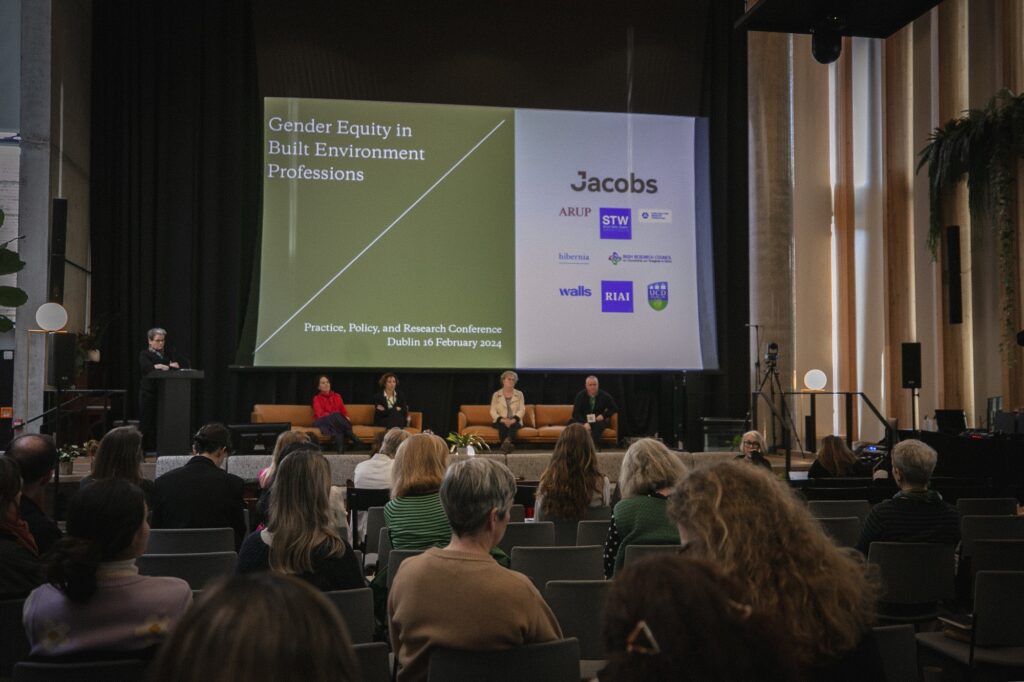
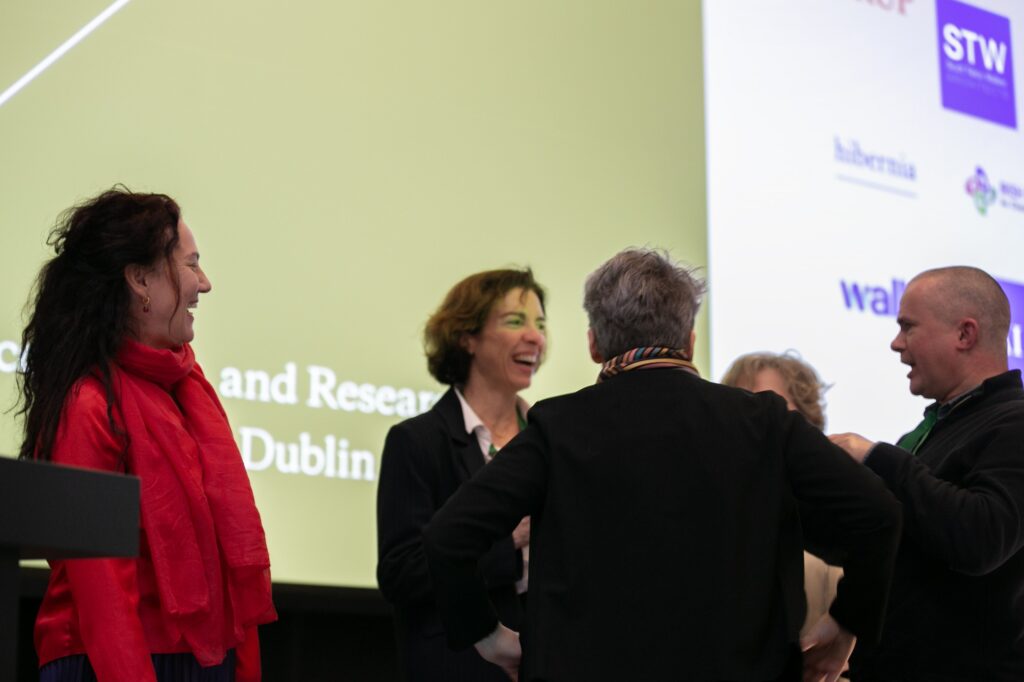
The next session of the day was ‘Equity in Practice’, brilliantly chaired by Nathalie Weadick former Director of IAF.
Prof Igea Trioani, gave us some insights from her soon to be published book Work-Life Balance in Architecture: Playing the Game. Her presentation concentrated on how neoliberalism constructs the identity of workers and how the identity of the architect is constructed.
Dr Elena Navarro Astor gave us an overview of the cross-national research that she has done with Dr Valerie Caven over the past ten years. Their findings are based on interviews with women architects in Spain, UK, France, and Lithuania. In Lithuania the is a roughly 50/50 male/female split in architects, however women architects still face similar difficulties to those in countries with fewer women architects – women not progressing to the higher positions, women fulfilling the caring roles which are perceived to be in conflict with work and more….
Dr Valerie Caven and Dr Scott Lawley presented the research they have recently completed on Engineers and EDI. They concluded that despite a collective will to improve gender equity, little has been done in practical and structural terms, and organisations still focus on the ‘ideal worker’ who works full-time, works long hours and is able to travel at short notice.
Some in the audience commented that this was depressing news, and perhaps it is. But also when we recognise the inequality, call it out, show the data, MAKE IT VISIBLE at least we can show that there is work to be done, that we cannot ignore this issue, and that these inequalities are compounded if you are not white, not cis-gendered, not able-bodied etc….
‘Making visible’ for all remains the primary goal and the primary way to make change.
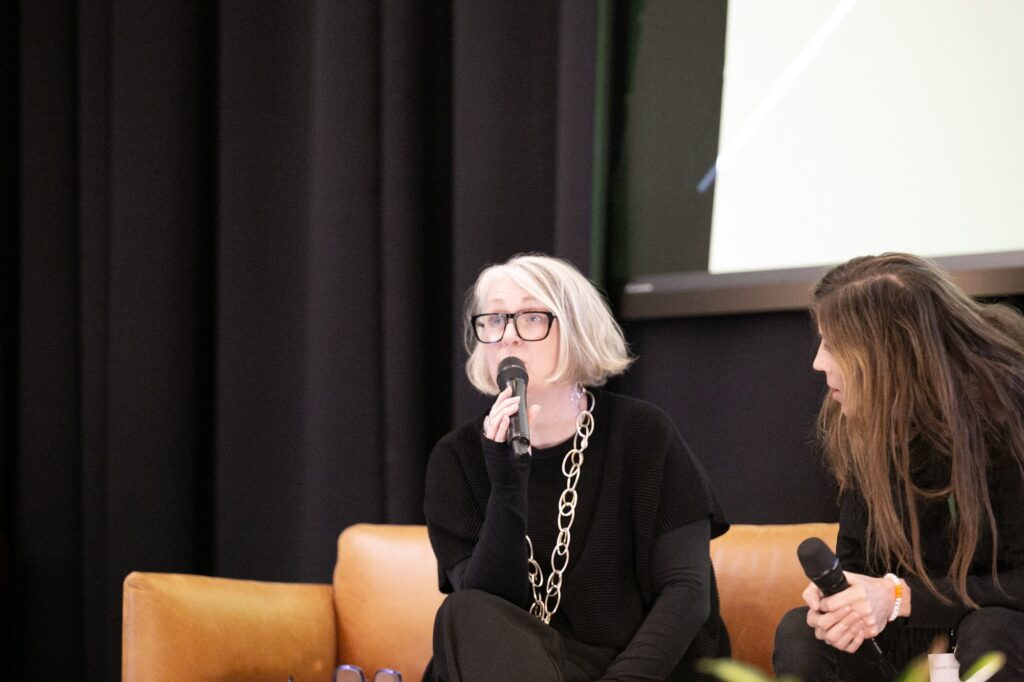
Our next session was on policy and education and we had the brillant Dr Harriet Harriss of Pratt University and equally brilliant Helen Iball of the feminist atelier Praxxis at Manchester School of Architecture expertly chaired by Emma Geoghegan, Head of Architecture at TU Dublin.
Dr Harriss began by reminding us that white women are not the default in the experience of marginalisation in architecture – it is not a binary of men versus women there are many others who experience compounded marginalisation and that we should be collecting the data on diversity of ethnicity (of lack of it) in architecture in Ireland.
Helen Iball took us through the feminist methods she uses in the her studio Praxxis, including Feminisms Conversations with prompts such as ‘I’m a feminist but…’, ‘Check your privilege’ and ‘Bodies of difference’. And more methods around disrupting the studio space.
Both speakers’ presentations challenged us to relfect on our position within the built environment professions, asking us to look at our own privilege and whether we are perpetuating harmful working practices in our own teaching and work.
As I reflect on the conference I think it is possible to be in both a position of privilege and marginalisation at the same time and if we keep that in the forefront of our thinking then better working conditions and culture for women can, and should, mean better working conditions and culture for al

Our final keynote speaker of the conference was Prof Inés Sanchez de Madariaga, Professor of Urban Planning at Universidad Politécnica de Madrid and UNESCO Chair on Gender in transportation, urban planning, architecture. She spoke to us about the leglislation she worked to put place in Spain, including a law requiring developments to complete a ‘Gender Impact Assessment’. She also spoke to us of her concepts of an ‘urbanism of care’, and of the ‘mobility of care’, housing and gender, as well as urban saftey audits.
My final thoughts at the end of the conference were around the realisation that this conference is not the end, but a beginning. Hopefully it is an ‘inflection point’, as mentioned by Inés, in the process of making real change. I wondered if we were all required to write an intersectional gender impact assessement for everything we do, from recruitment to events, from cycle lanes to buildings, how that might change our thinking, and change our priorities.
I want to thank all our speakers again for their precious time and invaluable insights. I also want to thank again our sponsors, Jacobs Engineering Ireland, ARUP, STW Architects, Construction Industry Federation, Walls Construction, and Hibernia Real Estate Group; and UCD College of Social Sciences and Law, UCD School of APEP
